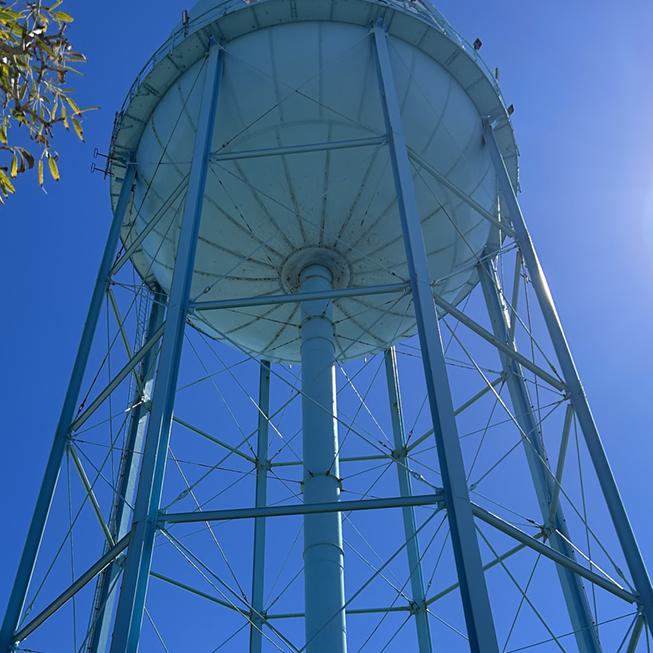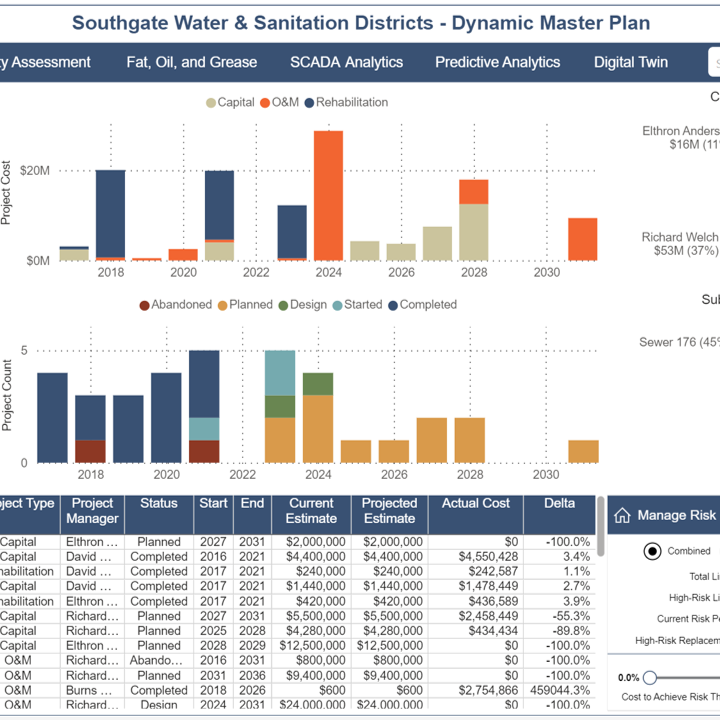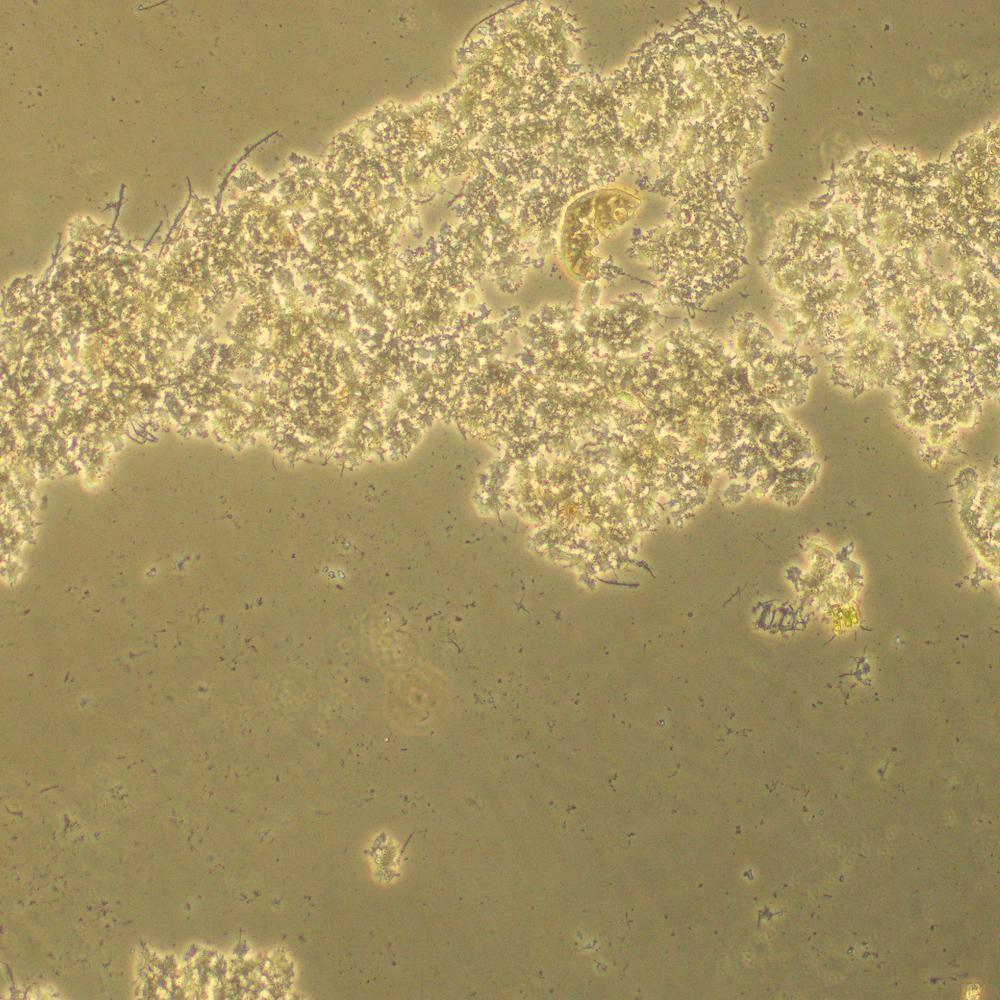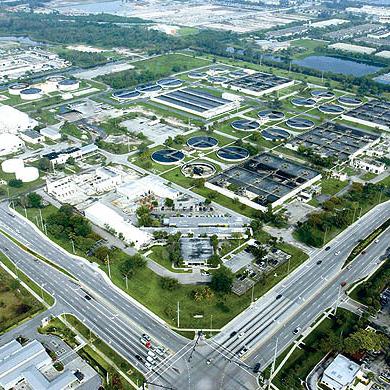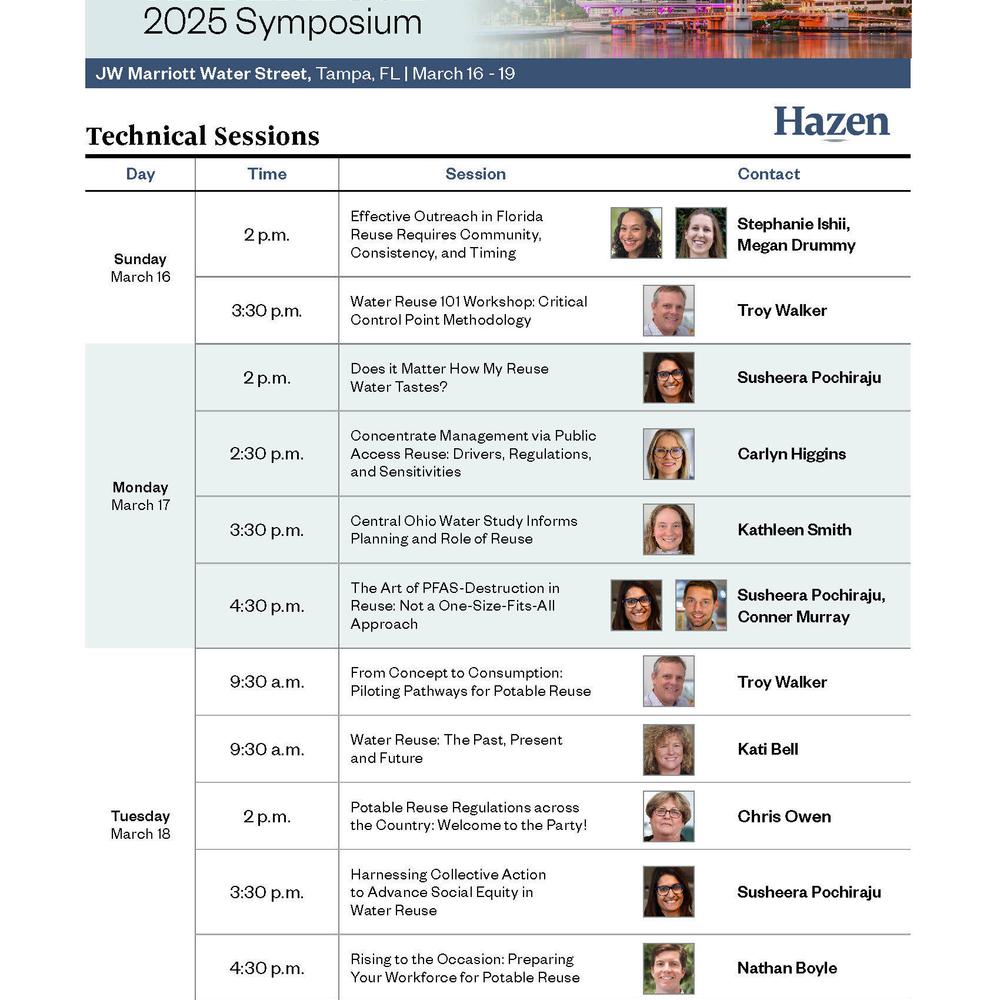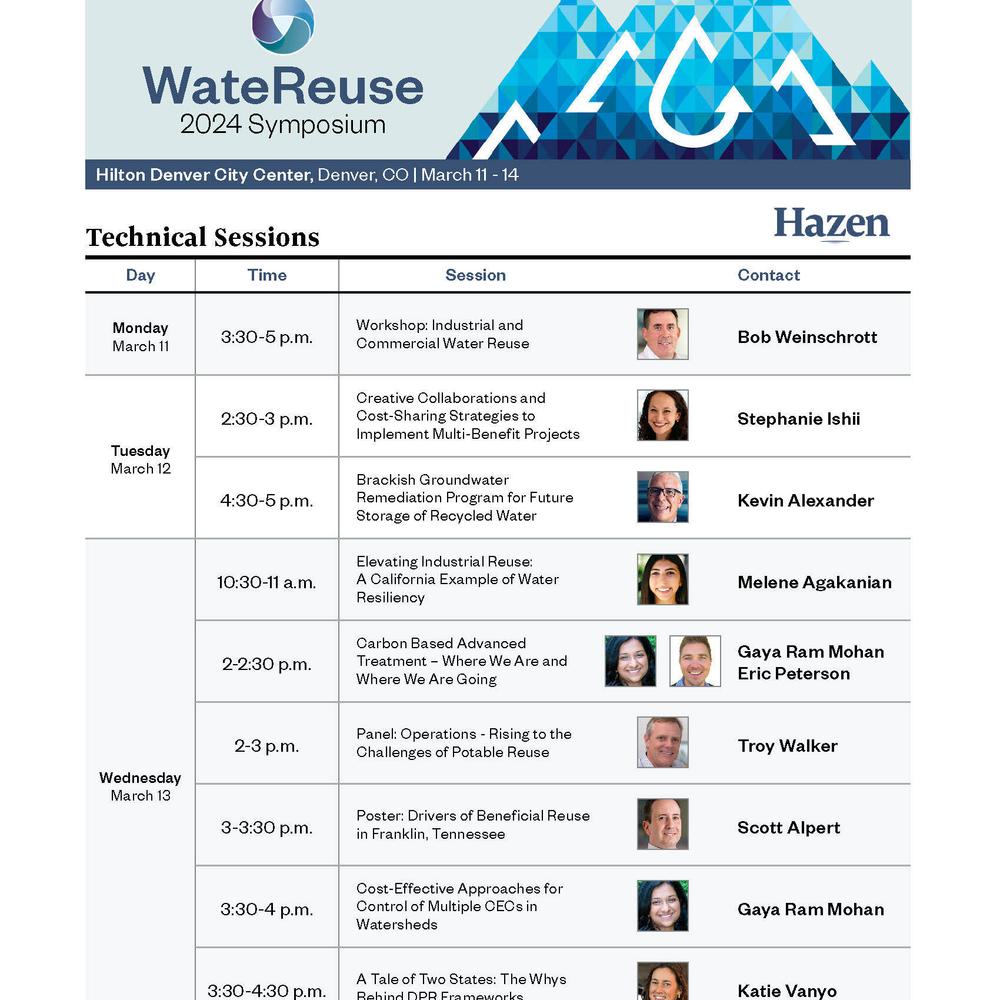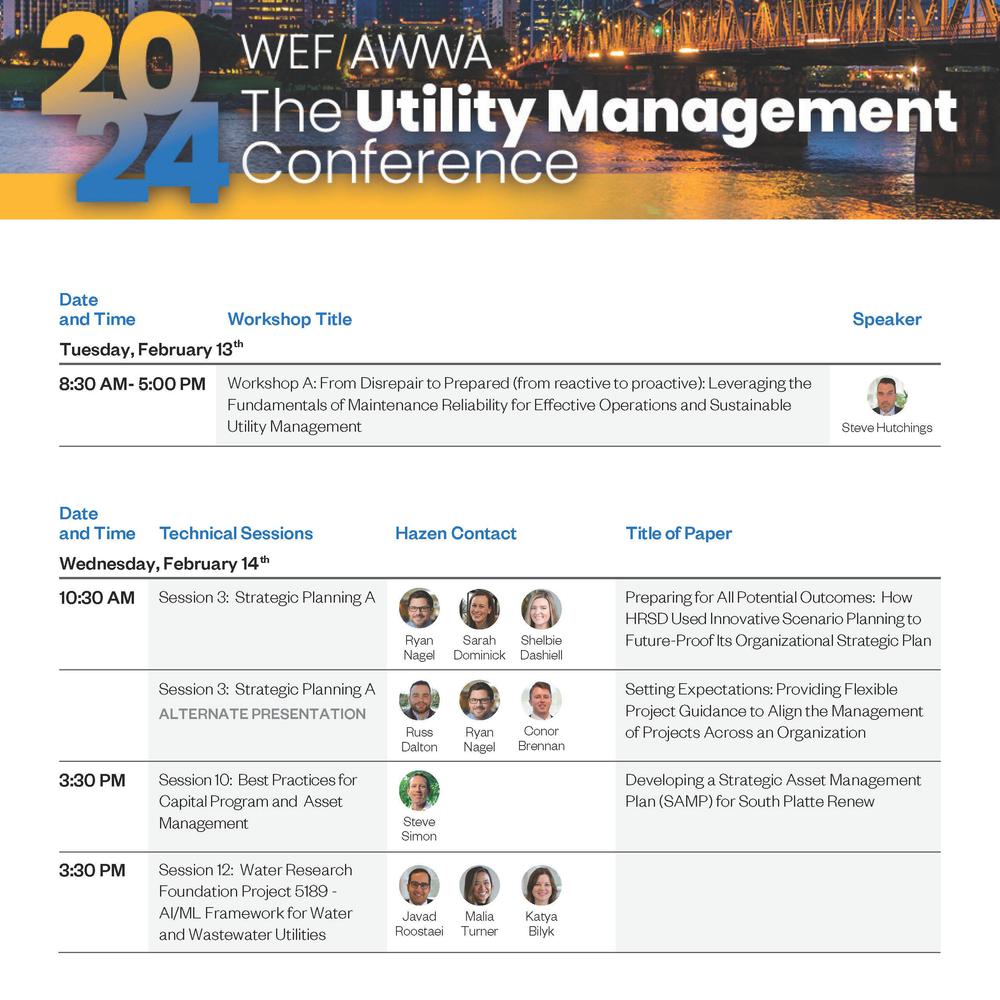Designing a PFAS Removal System Just Got Easier Through Artificial Intelligence
A cutting-edge Hazen tool uses machine learning to estimate the performance and lifespan of granular activated carbon filtration for PFAS removal—bypassing expensive and time-consuming tests.
At a Glance
- The first-of-its kind tool helps utilities identify the best granular activated carbon (GAC) products and maintenance schedule for PFAS treatment in their facilities. It produces results in minutes and doesn’t require any physical tests.
- The tool was built using machine learning based on comprehensive data—including more than 600 contaminant breakthrough curves (see below for what that means), 29 PFAS compounds, 20 commercial GAC products, and 49 source water samples.
- Hazen has developed an easy-to-use interface for the tool that enables engineers throughout the firm to quickly use it for GAC performance assessments.
Utilities that are considering granular activated carbon for PFAS removal don’t just want to know how often they’ll need to change out the carbon. They want to know which commercial GAC product is best for their facility’s unique mix of water and pollutants. Hazen's tool can answer those questions for you without spending $100,000 on testing.
As the U.S. Environmental Protection Agency prepares drinking water regulations for two kinds of PFAS—popularly known as “forever chemicals”—and considers potential additional regulations, advanced water treatment technologies that can remove PFAS are gaining popularity. One such technology is granular activated carbon, or GAC.
GAC products are made of high-carbon materials such as coal or coconut shells. The carbon is heated, causing its surface area to expand, which enables it to trap a wide range of contaminants from water moving through it. GAC is considered one of the best available technologies for removing many emerging contaminants, including certain PFAS. But utilities considering GAC for PFAS treatment face three key unknowns:
- When to replace the carbon: The carbon in GAC systems must be replaced periodically for the material to stay effective. Changing it more often than needed would waste money, while waiting too long could compromise water quality. The typical way to determine the optimal replacement window is to run physical tests in labs or actual facilities, all of which are time-consuming and expensive.
- How big to make the system: Typically, the more time water spends moving through GAC, the more effective the GAC is at removing the desired contaminants. But that longer contact time—or empty bed contact time (EBCT)—requires a bigger, more expensive GAC system. There’s a point where increasing GAC system size starts to yield only a small increase in PFAS removal, meaning the costs start to outpace the benefits. But it’s very difficult for operators to identify the optimal EBCT.
- What commercial GAC product is best for their facility: There are multiple GAC products on the market. What’s more, every treatment plant has a unique combination of water quality characteristics and pollutants. The GAC product that’s most effective for one facility might not be for another.
Hazen has developed a groundbreaking tool that can help answer those questions without any physical tests. It’s not just faster and cheaper: It’s the most comprehensive data-driven GAC assessment tool to date.
The model was refined with a team of colleagues whose expertise spans PFAS removal technology, machine learning, product development, and user interface design. The result is a powerful, accessible tool for evaluating PFAS treatment options. Here’s what makes it distinctive:
Comprehensive breakthrough data
In GAC filtration, a contaminant’s breakthrough means how much of it is escaping in treated water relative to how much is in the pre-treated water. For example, 10% breakthrough means 10% of a pollutant’s original concentration is getting through the filter. Breakthrough curves are graphs showing how breakthrough changes with the amount of water (or time) that passes. They help operators predict when the GAC will become ineffective and determine when it needs to be changed to prevent that.
There are reams of studies showing the breakthrough curves of PFAS and other organic pollutants in GAC systems. But individual studies can only reveal so much, as every water system has unique conditions. Hazen’s GAC prediction tool is based on a database of more than 600 breakthrough curves from peer-reviewed literature, engineering reports, and academic research, with data spanning bench-, pilot-, and full-scale settings. The data include 29 PFAS (including all regulated PFAS), 20 GAC products, and 49 source waters. It’s the most comprehensive PFAS treatment database to date.
Machine learning
Machine learning uses algorithms to comb massive data sets for relationships—including connections humans might miss—then generate rules based on the patterns it identifies. That’s what makes it a superior predictive tool to traditional statistical analyses, which plug data into known rules.
The Hazen tool was built using a state-of-the-art machine learning algorithm. In minutes, it can predict breakthrough for PFAS compounds in a wide range of GAC treatment scenarios, with an accuracy that rivals that of lab-based tests and trumps all previous data-driven models.
Easy-to-use interface
Hazen has developed a beta version of an application for the tool that doesn’t require any coding or machine learning experience to use. Drinking water experts across the firm can simply plug in a utility’s water or wastewater characteristics, GAC products of choice, and other key details to quickly determine the most effective GAC product and carbon replacement time frame for that client. They can also use the tool to determine the best EBCT, which can inform decisions about how big to make the GAC system.
Applications beyond PFAS
While this tool was developed with a focus on PFAS, it can also be used to evaluate GAC product performance and lifecycles for other organic pollutants such as pesticides, pharmaceuticals, disinfection byproduct precursors, and volatile organic compounds—which is to say, it’s highly adaptable.
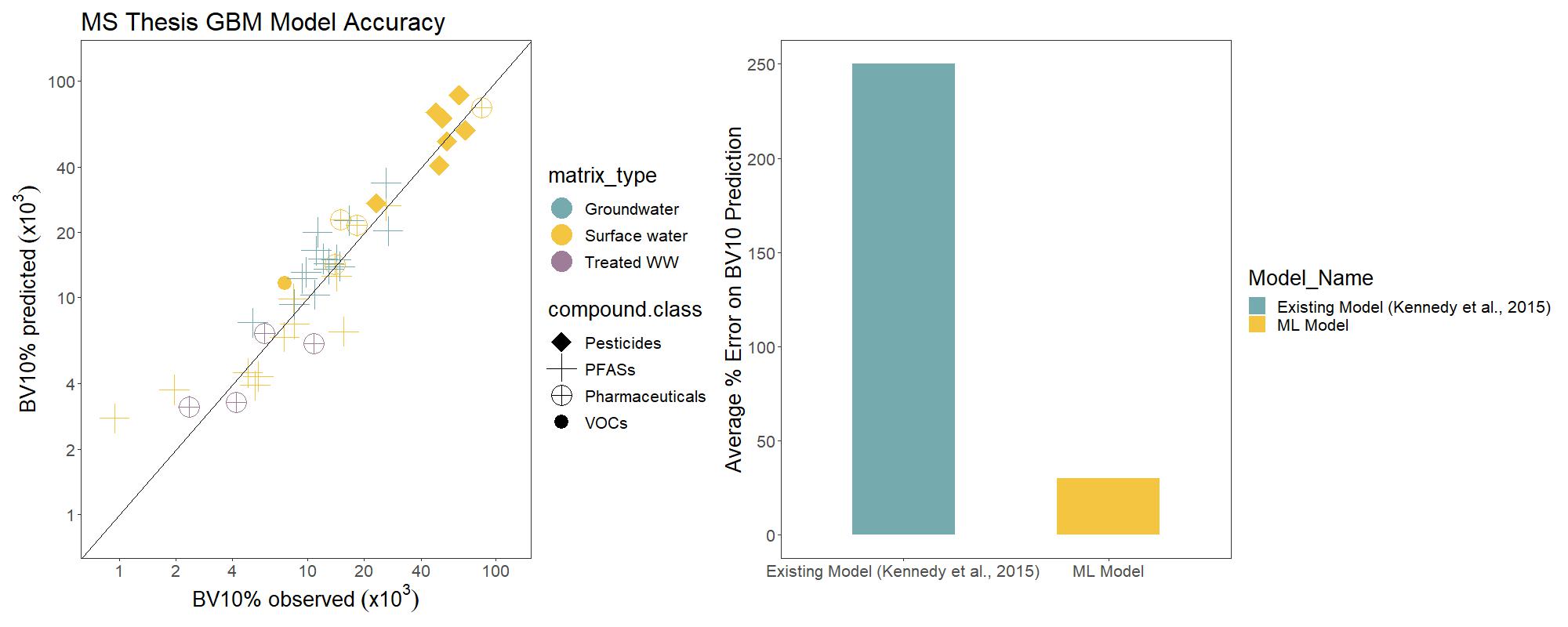
The graph on the left shows the results of using machine learning (ML) to predict the breakthrough of various pollutants in granular activated carbon (GAC) systems. The closer the symbols are to the diagonal line, the more accurate the model’s predictions. The right-hand chart compares the degree of error in that ML model to the error in an older model that used traditional statistics (Kennedy et al., 2015). The difference between the two shows that the ML model is far more precise when it comes to recommending an optimal time frame for changing out GAC. Citation: Kennedy, A. M., et al. “Full- and pilot-scale GAC adsorption of organic micropollutants.” Water Research, vol. 68, 2015, pp. 238–248.

